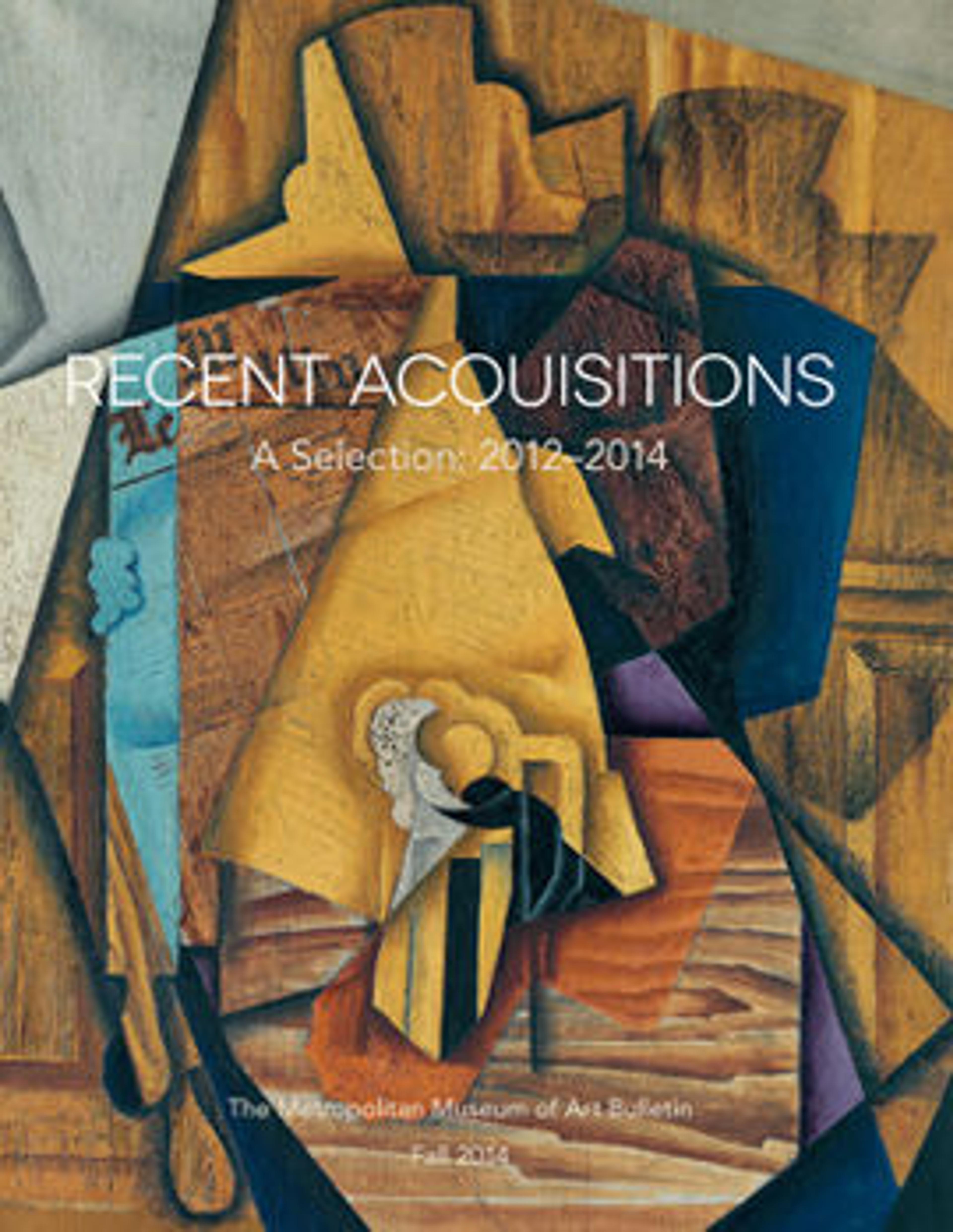Marble head of a goddess
The idealized features and crown identify this striking portrait as the image of a goddess, perhaps Aphrodite or Artemis. The pale translucent yellow hue of the calcite alabaster, now discolored from centuries of burial in the earth, would originally have contrasted with the pure white of her eyes, made of chalk, which once featured inlays for the irises and pupils. Earrings of gold or another contrasting material would have hung from her pierced ears. Other details, such as the decoration of her crown, were surely rendered with paint. The goddess's hair, parted at the center of the forehead, is pulled back in two rolls along the sides of the head and braided at the nape of her neck, where the ends rest against her skin just above the upper edge of her garment. The dramatic turn of her head, the unfinished top above the crown and the fact that the artist paid less attention to the back indicate that the statue was a dynamic, full- figure portrait meant to be viewed from below. Originally it may have been set on a pedestal in a niche.
Artwork Details
- Title: Marble head of a goddess
- Period: Hellenistic
- Date: 2nd–1st century BCE
- Culture: Greek
- Medium: Marble
- Dimensions: H. 18 11/16 in. (47.5 cm)
- Classification: Stone Sculpture
- Credit Line: Bequest of Armida B. Colt, 2011
- Object Number: 2012.477.1
- Curatorial Department: Greek and Roman Art
More Artwork
Research Resources
The Met provides unparalleled resources for research and welcomes an international community of students and scholars. The Met's Open Access API is where creators and researchers can connect to the The Met collection. Open Access data and public domain images are available for unrestricted commercial and noncommercial use without permission or fee.
To request images under copyright and other restrictions, please use this Image Request form.
Feedback
We continue to research and examine historical and cultural context for objects in The Met collection. If you have comments or questions about this object record, please contact us using the form below. The Museum looks forward to receiving your comments.
